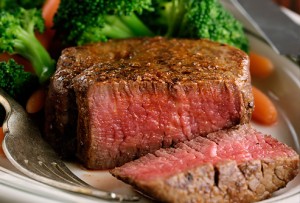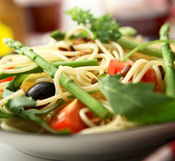October 19, 2015
March 26, 2012
The Leanest Cut of All
Is it possible to eat beef on a regular basis and not get beefy in the process? Absolutely, says an article that appeared in a supplement to the October 2005 issue of Tufts University Health & Nutrition Letter. The trick is to select the right cut of beef and to exercise portion control.
Here’s a look at 10 of the leanest cuts, which, according to the National Cattleman’s Beef Association, contain on average only 1 more gram (g) of saturated fat than a skinless chicken breast per 3-ounce serving:
1. eye round (1.4 g saturated fat, 4 g total fat)
2. top round steak (1.6 g saturated fat, 4.6 g total fat)
3. chuck mock tender steak (1.6 g saturated fat, 4.7 g total fat)
4. bottom round (1.7 g saturated fat, 4.9 g total fat)
5. top sirloin (1.9 g saturated fat, 4.9 g total fat)
6. round tip (1.8 g saturated fat, 5.0 g total fat)
7. 95% lean ground beef (2.4 g saturated fat, 5.0 g total fat)
8. brisket (flat half) (1.9 g saturated fat, 5.1 g total fat)
9. shank crosscuts (1.9 g saturated fat, 5.4 g total fat)
10. chuck shoulder roast (1.8 g saturated fat, 5.7 g total fat)
—
original article from IDEA Fitness
March 20, 2012
Fuel Up!
Wow, this is great!
This one simple step alone will not only lengthen your workout, but it will also increase your performance, which is the key when training and exercising. That step? Fill ‘er up! If you don’t eat before exercise, you will likely feel light-headed, fatigue and nausea. Your body is then forced to turn to muscle protein for fuel because it doesn’t have enough carbohydrates to perform.
By starting your workout well-fueled, your body will burn a combination of the carbohydrates and stored fat. So fill ‘er up…and here are the food and beverage tips from your coach Max: Eat 1 hour before a workout or event. Choose a high carbohydrate, low fat, moderate protein meal or snack. And don’t forget to hydrate. Drink at least 10 ounces of water to help offset perspiration loss during your workout.
March 19, 2012
6 Fitness Tips to Follow While Traveling
 If on the whole you make the effort to eat healthy and have an effective exercise regime, you are likely to be concerned that any travel plans will derail this process. So here are some tips that will help you continue with your fitness programs even when you travel.
If on the whole you make the effort to eat healthy and have an effective exercise regime, you are likely to be concerned that any travel plans will derail this process. So here are some tips that will help you continue with your fitness programs even when you travel.
1. Do some homework before you leave. Check if the hotel that you plan to stay in has gym facilities or a pool and so on (depending upon your preferred workout activity).
2. Remember to pack workout clothes and shoes. This will remind you to work out and also make it convenient to hit the gym or simply head out for a walk wherever you are staying.
Workout shoes can be bulky so rather than carrying them in your baggage, you can simply wear them when you travel and instead pack the other less bulky shoes into your bag.
3. Carry a jump rope or a couple of dumbbells or kettle bells with you. A session with the jump rope can be a really strenuous workout in a short time, and doing a few weights with dumbbells or even lifting some bottles of bottled water can be a good workout.
4. Do other exercises that don’t need equipment – pushups, leg raises, squats, lunges and stair climbing are all easy to do wherever you are.
5. When eating out, order items that are steamed, grilled or poached. Avoid the items that are fried or calorie rich – if it says ‘crispy’ or ‘golden’, it’s probably been deep-fried, if it says ‘rich gravy or dressing’ that means high in calories too.
Also remember if it is a salad you’re ordering, ask for vinaigrette dressing rather than a cream or mayo-based one. Order small portions and opt for fruit instead of a confection at the end of the meal
—
Courtesy from FitnessHealthZone
March 17, 2012
Ready to Rock Your Body for the Summer Heat?
April 30, 2011
Tall, obese men at higher risk for blood clots

Tall men, especially if they are obese, are at a greater risk for blood clots than shorter, normal-weight men, suggests a new study. (AFP / Getty Images / April 29, 2011)
Tall and obese men appear more likely to develop venous thromboemoblism, which can lead to a potentially lethal blood clot in the lungs, according to a study published Thursday.
Researchers from the University of Tromso in Norway analyzed height and weight data from 26,714 people and assessed the incidence of venous thromboembolism over 12-1/2 years. In that time, 461 people developed the condition, in which a blood clot (or thrombosis) forms in a deep vein, usually in the thigh, and can move into an artery in the lung. Here’s a basic explanation of the condition fromPatient Health International and a detailed look, including risk factors, from Cleveland Clinic.
In the lung, the clot (called a pulmonary embolism) blocks blood supply and can lead to death. The American Heart Assn. offers this look at venous thromboembolism incidence and fatality statistics.
It begins: “Venous thromboembolism occurs for the first time in about 100 per 100,000 persons each year in the United States. About one third of patients with symptomatic VTE manifest pulmonary embolism, whereas two thirds manifest deep-vein thrombosis alone.”
The new research suggests that being either obese or tall, or the combination, puts men at greater risk for the condition compared to short (5 feet 7.7 inches or shorter), normal-weight men. Men who were obese and taller than 5 feet 11.7 inches were at fivefold greater risk of a blood clot, and men who were tall but of normal weight had a 2.6 times greater risk. Short, obese men had a 2.1 greater risk than short normal-weight men for a blood clot.
Yes, women too: Obese women, short or tall, had a slightly greater risk of a blood clot, scientists reported in Arteriosclerosis, Thrombosis, and Vascular Biology. Tall normal-weight women didn’t have increased risk.
Obesity is already a well-known risk factor for deep-vein thrombosis, but researchers aren’t sure why tall people would be more prone to such clots. The lead author of the study, Sigrid Braekkan, offers an explanation in a press release:
“In tall people the blood must be pumped a longer distance by the calf-muscle pump, which may cause reduced flow in the legs and thereby raise the risk of clotting,” Braekkan said.
There’s nothing a man can do about his height, so researchers say big men – and short ones, of course — should try to stay slim.
In the meantime, here are a few tips for preventing blood clots from the Agency of Healthcare Research and Quality:
— Don’t remain sedentary for more than an hour.
— On plane trips, get up from your seat and move around.
— Try not to cross your legs
— Wear loose-fitting clothing
— Reduce salt in your diet
And here are some tips from the same agency on preventing venous thromboembolsim in the hospital. There, it’s the most common cause of preventable death.
April 29, 2011
Interval training may help obese and overweight people slim down
A group cycling class can offer high-intensity cardiovascular training. (Jewel Samad / AFP/Getty Images)
The one-two punch of high-intensity exercise and healthful eating was helpful in getting overweight and obese people to slim down, a study finds.
The study, presented this week at the National Obesity Summit in Montreal, Canada, focused on data on 62 overweight and obese men and women involved in a nine-month program at the Montreal Heart Institute. The participants engaged in two to three weekly one-hour supervised exercise sessions and were instructed on how to follow a Mediterranean diet.
The exercise sessions concentrated on high-interval training, or alternating between short periods of vigorous workouts and rest periods. Interval training has been shown in some studies to promote weight loss as it boosts cardiovascular health. Participants had a five-minute warm-up followed by repeated bouts of exercise at 80% of peak effort. Those were interspersed with brief recovery periods, and the workout finished with a five-minute cool-down. In addition, the study subjects did a 20-minute weight training circuit and were encouraged to do one or two moderate 45-minute exercise sessions a week.
At the end of the study, the men and women on average lost 5.5% of their body mass, reduced waist circumference by 5.15% and increased cardiovascular capacity by 15%. They also had an average 7% decrease in LDL (bad) cholesterol and an 8% increase in HDL (good) cholesterol.
In the study the authors concluded that the supervised twice-weekly interval training program “appeared feasible, safe and time-efficient in this obese population.”
April 15, 2011
7 Breakfast Foods to Swap In, Not Out
Is breakfast really the “most important” meal of the day? Maybe, at least that’s what they told us in health class.
So if breakfast is the first meal of the day and you’re trying to lose weight, it’s probably a smart idea to make your first meal a good one.
And since most dieters judge food by two simple factors: fat and calories. Here are seven foods you should ditch and seven foods you should switch to if you’re looking for a better breakfast.
English Muffin or Bagel?

Sorry, but a bagel with a schmear of cream cheese just isn’t Kosher – at least not for dieting. You’re better off switching to toasted nooks and crannies dripping with melted butter.
*English Muffin, with butter
5.8g total fat
189 calories
Bagel, with cream cheese
8g total fat
436 calories
Apple or Banana?

Let’s face it, both apples and bananas are awesome – probably the healthiest foods on this list – but, if you’re looking to cut calories, go with the apple.
*Apple
0.17g total fat
50 calories
Banana
0.33g total fat
100 calories
Blueberry Yogurt or Oatmeal?

Even without the “probiotics,” eating a light yogurt is smarter than a bowl of old fashioned oatmeal.
*Dannon Light’n Fit Blueberry Yogurt (6oz)
0g total fat
80 calories
Old Fashioned Quaker Oats, with water (1/2 cup)
3g total fat
150 calories
Coffee with Skim Milk or 2% Milk?

For most people, missing their morning coffee is grounds for murder. So please, drink up! But make sure you stick with non-fat milk, not 2%
*Starbucks Coffee, with non-fat milk (short)
0g total fat
35 calories
Starbucks Coffee, with 2% milk (short)
2g total fat
50 calories
Wheaties or Raisin Bran?

One cereal uses professional athletes to push product. Another is peddled by the sun. The sports stars win, go with a bowl of Wheaties.
*Wheaties (1 cup)
1g total fat
110 calories
Raisin Bran (1 cup)
1.3g total fat
190 calories
Turkey Bacon or Pork?

It isn’t real bacon – it might not even taste like it – but the fat and calories don’t lie. Spare a pig, eat a turkey!
*Butterball Bacon-Style Turkey (1 slice, 18g)
3g total fat
40 calories
Pork Bacon (3 slices, 19g)
7.9g total fat
103 calories
Grapefruit Juice or Orange Juice?

Grapefruit juice might not taste as sweet, but choke it down. It’s better than orange juice. And when you drink grapefruit juice, it’s less likely to squirt in your eye.
*Tropicana Grapefruit Juice (8 fl oz)
0g total fat
90 calories
Tropicana Orange Juice (8 fl oz)
0g total fat
110 calories
April 12, 2011
Does Dieting Make You Angry And Stressed?
 The idea of reaching for a stick of celery when all you really want is a big slice of chocolate cake, would probably make most people a little grumpy.
The idea of reaching for a stick of celery when all you really want is a big slice of chocolate cake, would probably make most people a little grumpy.
And, according to results published in the Journal of Consumer Research, exerting self-control while dieting can in fact make people feel angry and irritable.
The researchers set up four experiments to compare the attitudes of volunteers who were on a diet, with those who ate what they wanted. They found that:
- Participants who choose an apple over a bar of chocolate were more likely to choose movies which had angry, revenge-filled plots.
- Those who choose a gift certificate for groceries rather than one for a spa service, showed more interest in looking at angry faces as opposed to more fearful ones.
- And, in an other experiment, people who chose a healthy snack instead of a less healthy one were more irritated by a public service advert promoting exercise.
Interestingly, the researchers have linked these feelings of irritation, stress, and anger to the act of exerting self-control while dieting, rather than the “dieting” itself.
The researchers point out that public policy makers should be more aware of the potential negative emotions, which can result when the public are encouraged to exert more self control over their daily choices.
What about you — does being on a diet make you feel more irritated or angry? How do you make healthy food choices without feeling like you’re denying yourself?
—
Article Courtesy from: diet-blog
Image courtesy by: Kreutziana
February 23, 2011
More Evidence Ties Moderate Drinking to Heart Health
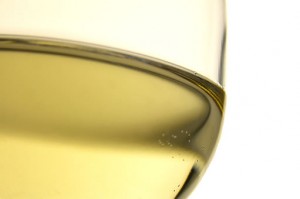 Moderate alcohol consumption may help protect against heart disease, according to two new papers by Canadian researchers.
Moderate alcohol consumption may help protect against heart disease, according to two new papers by Canadian researchers.
One team at the University of Calgary reviewed 84 studies that examined alcohol consumption and heart disease, and concluded that people who drink alcohol in moderation (one drink or less per day) are 14 percent to 25 percent less likely to develop heart disease as those who don’t drink alcohol.
Another team reviewed 63 studies and found that moderate consumption of alcohol (which the researchers defined as up to one drink a day for women, and one to two drinks a day for men) significantly increases levels of “good” cholesterol, which has a protective effect against heart disease.
The findings, published online Feb. 22 in the BMJ, add to evidence from prior studies that found moderate alcohol consumption may be associated with a decreased risk of heart disease.
One expert said the research does seem to support the intake of a little alcohol to help the heart.
“In addressing lifestyle issues, alcohol consumption, in moderation, could be recommended as part of a heart-healthy lifestyle,” said Dr. Suzanne Steinbaum, a preventive cardiologist at Lenox Hill Hospital in New York City.
The authors of the second paper, also from the University of Calgary, conclude that it is the alcohol content that provides the health benefits, not the type of alcoholic beverage (wine, beer or spirits).
Steinbaum agreed with that assessment. “One of the mechanisms of decreasing heart disease is by increasing the HDL [‘good’ cholesterol], which is independent of the type of alcohol, whether it be wine, beer or spirits,” she said.
But the researchers on the first paper noted that although moderate drinking appears to boost heart health, that message needs to be balanced with the caveat that drinking too much is bad for your health.
Discussions about the impact of alcohol on heart disease should now focus on “how to integrate this evidence into clinical practice and public health messages,” William Ghali, of the University of Calgary, noted in a news release from the journal’s publisher.
—
Original Article by HealthDay News
Image courtesy from VillageVoice.com
